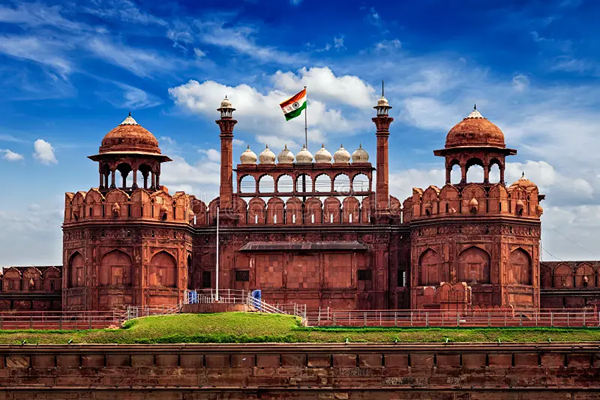GOLDEN TRIANGLE
Explore the enchanting cities of Delhi, Agra, and Jaipur on the iconic Golden Triangle tour of India.
From majestic forts and ancient observatories to the timeless Taj Mahal, this itinerary promises a blend of culture, architecture, and unforgettable memories.





Meeting & greeting at the airport and transfer to hotel.
Overnight stay at the hotel.
After a yummy Breakfast at the hotel and enjoy the full day sightseeing of New Delhi.
See India Gate, Parliament House, Qutub Minar, Purana Qila, Humayun’s Tomb, Jantar Mantar Etc.
Proceed for the sightseeing of Old Delhi which includes Jama
Masjid, Red Fort, Gandhi memorial, Raj Ghat.
Overnight stay at the hotel.
Delhi - Abhaneri - Jaipur (400 km / 6 hrs)
After healthy breakfast at the hotel ,drive to Jaipur.
Enroute, visit Chand Baori, a stepwell situated in the village of
Abhaneri in the Indian state of Rajasthan. It extends
approximately 30 m (100 ft) into the ground, making it one of
the deepest and largest stepwells in India.
On arrival at Jaipur check-in at hotel. Overnight stay at hotel.
After scrumptious breakfast go for an excursion to Amber Fort.
Ascend the fort on Elephants back. In the afternoon take tour
of the city visiting the Hawa Mahal (Palace of Winds), City palace, the Jantar
Mantar (observatory), and the Birla temple.
In the evening check into a hotel.
Stay overnight at the hotel.
Jaipur - Fatehpur Sikri - Agra (250 km / 4.5 hrs)
After freash breakfast at the hotel, drive to Agra, en-route visit
Fatehpur Sikri. Fatehpur Sikri was built during 1571 and 1585.
Fatehpur Sikri is one of the finest examples of Mughal
architectural splendor at its height. Later continue drive to
Agra. On arrival at Agra check-in at hotel.
Afternoon visit Agra Fort. Agra Fort, which has the Pearl Mosque, Diwan-e-am (the
hall of public audience) and Diwan-e-Khas (the hall of private
audience).
Overnight stay at hotel.
Agra - Delhi (220 km / 3 hrs)
Delhi - Onward Destination
After a palatable breakfast, visit the famous Taj Mahal.
Taj Mahal built by Mughal Emperor Shah Jahan as a memorial
to his queen Mumtaz Mahal, made out of white marble took 22
years to complete (1630-1652 AD). Afternoon drive to Delhi.
On arrival at Delhi, transfer to airport for departure.
TOUR ENDS AS YOU LEAVE FOOTPRINTS AND TAKE MEMORIES
Currency: ₹ INR
Time Zone: GMT + 5.5 HRS
Driving Side: Left
Drinking Water: Opt for Bottled Water
Emergency phone: Ambulance: 102; Fire: 101; Police: 100, 103 (traffic accident)
Voltage: 220 V
Power Sockets commonly available:
Chand Baori’s Cinematic Fame: The stepwell in Abhaneri, visited on Day 3, is one of India’s deepest, plunging 100 feet with 3,500 steps. It’s so striking that it appeared in films like The Dark Knight Rises as the pit where Batman escapes.
Jaipur’s Elephant Ride Tradition: On Day 4, you ascend Amber Fort in Jaipur on elephant back, a nod to Rajasthan’s royal past when maharajas used elephants for grand entrances, though jeeps are now a common alternative to promote animal welfare.
Taj Mahal’s Love Story: Visited on Day 6 in Agra, the Taj Mahal was commissioned by Emperor Shah Jahan for his wife Mumtaz Mahal, who died giving birth to their 14th child. It took 20,000 workers and 1,000 elephants to complete this marble masterpiece.
Fatehpur Sikri’s Ghost City: On Day 5, you explore Fatehpur Sikri, a Mughal city abandoned just 14 years after its 1571 construction due to water shortages, leaving behind a perfectly preserved “ghost city” of red sandstone.
Delhi’s Astronomical Wonder: On Day 2, Jantar Mantar in New Delhi, a UNESCO World Heritage Site, features giant stone instruments built in 1724 to track celestial movements, making it one of the world’s largest pre-modern observatories.